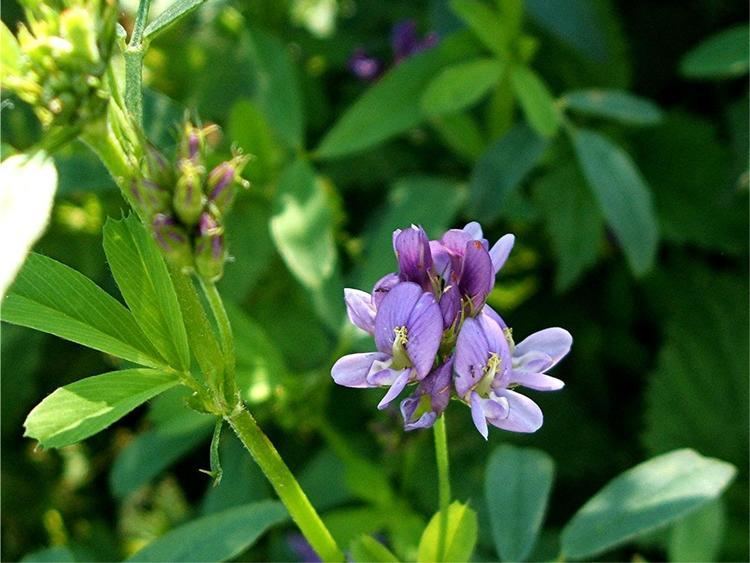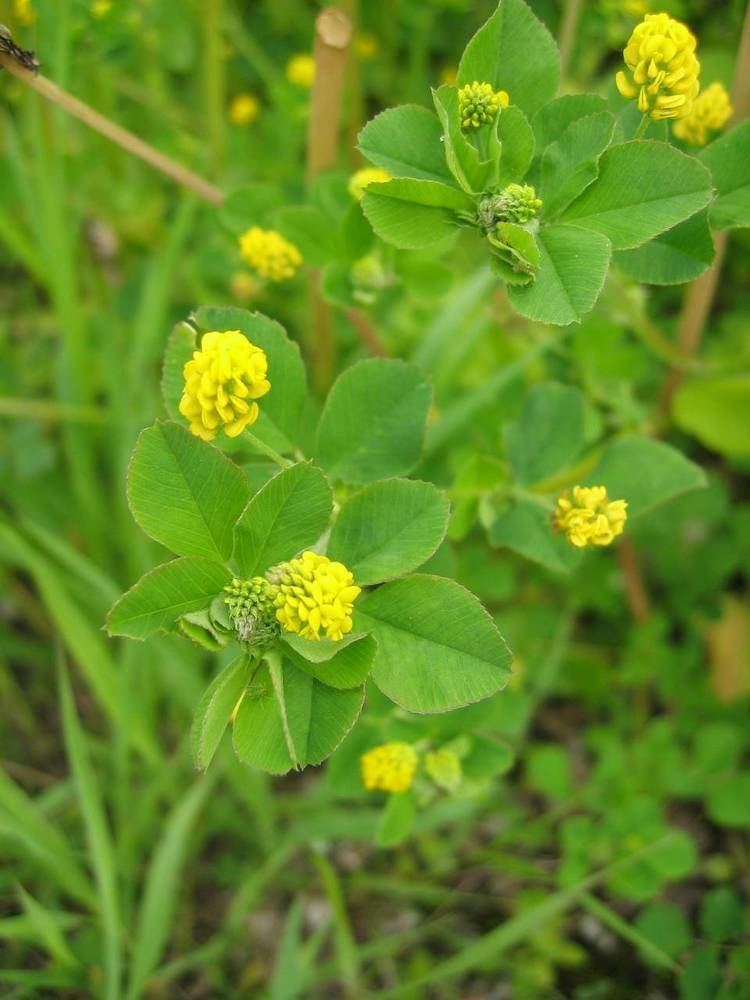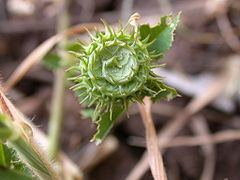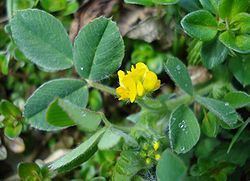Subfamily Faboideae Scientific name Medicago Rank Genus | ||
 | ||
Lower classifications Alfalfa, Medicago truncatula, Black Medic, Medicago polymorpha, Medicago falcata | ||
Lucerne alfalfa medicago sativa cultivation
Medicago is a genus of flowering plants, commonly known as medick or burclover, in the legume family. It contains at least 87 species and is distributed mainly around the Mediterranean basin. The best-known member of the genus is alfalfa (M. sativa), an important forage crop, and the genus name is based on the Latin name for that plant, medica, from Greek: μηδική (πόα) median (grass). Most members of the genus are low, creeping herbs, resembling clover, but with burs (hence the common name). However, alfalfa grows to a height of 1 meter, and tree medick (M. arborea) is a shrub. Members of the genus are known to produce bioactive compounds such as medicarpin (a flavonoid) and medicagenic acid (a triterpenoid saponin). Chromosome numbers in Medicago range from 2n = 14 to 48.
Contents
- Lucerne alfalfa medicago sativa cultivation
- Evolution
- Symbiosis with nitrogen fixing rhizobia
- Agricultural uses
- Insect herbivores
- Species
- References

The species Medicago truncatula is a model legume due to its relatively small stature, small genome (450–500 Mbp), short generation time (about 3 months), and ability to reproduce both by outcrossing and selfing.

Comprehensive descriptions of the genus are Lesinš and Lesinš 1979 and Small and Jomphe 1989. Major collections are SARDI (Australia), USDA-GRIN (United States), ICARDA (Syria), and INRA (France).

Evolution

Medicago diverged from Glycine (soybean) about 53–55 million years ago (in the early Eocene), from Lotus (deervetch) 49–51 million years ago (also in the Eocene), and from Trigonella 10–22 million years ago (in the Miocene).
Symbiosis with nitrogen-fixing rhizobia

Béna et al. (2005) constructed a molecular phylogeny of 23 Sinorhizobium strains and tested the symbiotic ability of six strains with 35 Medicago species. Comparison of these phylogenies indicates many transitions in the compatibility of the association over evolutionary time. Furthermore, they propose that the geographical distribution of strains limits the distribution of particular Medicago species.
Agricultural uses

Other than alfalfa, several of the creeping members of the family (such as Medicago lupulina and Medicago truncatula) have been used as forage crops.
Insect herbivores
Medicago species are used as food plants by the larvae of some Lepidoptera species including the common swift, flame, latticed heath, lime-speck pug, nutmeg, setaceous Hebrew character, and turnip moths and case-bearers of the genus Coleophora, including C. frischella (recorded on M. sativa) and C. fuscociliella (feeds exclusively on Medicago spp.).
Species
This list is compiled from:
Recent molecular phylogenic analyses of Medicago indicate that the sections and subsections defined by Small & Jomphe, as outlined above, are generally polyphyletic. However, with minor revisions sections and subsections could be rendered monophyletic.
